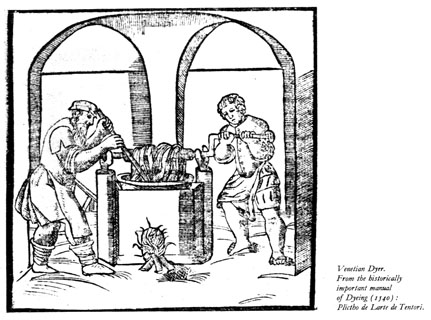
Foreward
The Sociological Basis of Mediaeval Craftsmanship
Dyeing and Dyers' Guilds in Mediaeval Craftsmanship
Dyes in the Middle Ages
Guilds in Mediaeval England and Scotland
The Mediaeval Love of Color
Historical Gleanings

Foreward
The Sociological Basis of Mediaeval Craftsmanship
Dyeing and Dyers' Guilds in Mediaeval Craftsmanship
Dyes in the Middle Ages
Guilds in Mediaeval England and Scotland
The Mediaeval Love of Color
Historical Gleanings
The publication of weighty and erudite treatises is not within the chosen scope of this periodical. The editors' aim is rather to quicken the interest of the reader in the history of dyeing and its cognate spheres, by means of articles which, though written by experts, should be of general appeal.
Short notes on science, technics, and other subjects will be welcomed by readers not historically interested. Not the least of the aims of the Ciba Review will be to inform its readers as to Ciba products old and new, and to give useful practical hints for the various branches of dyeing.
From time to time the Review will contain supplements with patterns of dyes; for collecting these patterns portfolios will be supplied free of charge on application to the Society of Chemical Industry in Basle (see enclosed card).
The Editor
Every age in history is like the head of Janus, the deity of the ancient Roman home. In one respect it may bear the stamp of a certain uniformity, the aggregate of the forces of that tradition which has formed it; at the same time there are other forces at work, which, though as yet latent or immature, will determine the shape of things to come.
In no period of our history was this dualism more pronounced than in the Middle Ages. The rule of the Church on the one hand, and that of the feudal lords on the other, determined the structure of the mediaeval world. The spiritual power of the Church was unbounded. No other philosophy or creed could hold its own or even exist beside the Christian faith. Science and research in the modern sense were non-existent. The mediaeval thinkers, the schoolmen, were content to remain within the bounds of the Church.
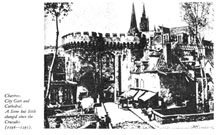 Material riches were subordinate to the Church, and wealthy men, anxious for their spiritual welfare, enriched the Church through large endowments.
Material riches were subordinate to the Church, and wealthy men, anxious for their spiritual welfare, enriched the Church through large endowments.
Great cathedrals were built, which still tower above our cities as monuments of a living and representative faith. We are told that men and women of noble birth harnessed themselves to the carts, and dragged stones and bread for the workmen, thus taking their share in the great work.
What tremendous impetus unbounded faith could impart to the minds of men, finds nowhere more striking expression than in the Crusades. For centuries the foremost idea of Christendom was to deliver the Holy Sepulchre from the hands of the infidels. In that magnificent endeavour realities were forgotten, and men did not pause to consider what it actually meant to defy the combined power of Western Asia and North Africa.
The mediaeval Church was not only a spiritual, but a very real temporal power; archbishops, bishops, and abbots held sway over territories as large as many a prince's, and often larger than those ruled by earls, barons, and knights. How this system of feudal government, that is, a government based on the rights of fief, grew up, has to this day not been finally explained, and the course of events which reduced the peasant to the level of abject serfdom, remains entirely obscure. Many theories have been advanced in explanation of these two questions, but none of them has been finally proved.
It should be noted here that the term "Middle Ages" is often very loosely used. North of the Alps, the Middle Ages end with the close of the 15th century, south of that boundary they may be said to end at the beginning of the same century. The early Middle Ages are the period, during which the conditions described above, developed, on the continent this stage was reached about the year 1000 The actual Middle Ages lasted until about the year 1350. The period following is characterised by the cultural predominance of the towns.
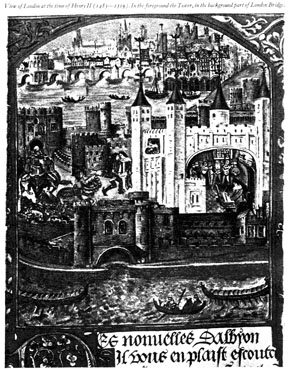 The first signs of revolt against the feudal system began soon after its final establishment, already in the 11th century. The strongholds of civic liberty were the towns. When the Germanic tribes became masters of Western Germany, the Rhine,France, and Italy, these districts already possessed flourishing towns. Verona, Milan, Cologne, Trves, Ratisbon, Basle, Reims, Paris, etc., were Roman cities with a population as mixed as any in the Roman Empire. There is no doubt that the importance of these towns decreased considerably during the early Middle Ages, as the Germanic conquerors were largely agricultural. But they never became entirely insignificant. Of particular importance in this development were the cities of England, which already in the 11th century enjoyed considerable liberties. London especially, acquired a certain measure of independence very early, and maintained it in the struggle between King Stephen and Mathilde (1135-1153), no less than it did about a century later, when the Lord Mayor of London was commissioned to watch over the carrying-out of the Magna Charta.
The first signs of revolt against the feudal system began soon after its final establishment, already in the 11th century. The strongholds of civic liberty were the towns. When the Germanic tribes became masters of Western Germany, the Rhine,France, and Italy, these districts already possessed flourishing towns. Verona, Milan, Cologne, Trves, Ratisbon, Basle, Reims, Paris, etc., were Roman cities with a population as mixed as any in the Roman Empire. There is no doubt that the importance of these towns decreased considerably during the early Middle Ages, as the Germanic conquerors were largely agricultural. But they never became entirely insignificant. Of particular importance in this development were the cities of England, which already in the 11th century enjoyed considerable liberties. London especially, acquired a certain measure of independence very early, and maintained it in the struggle between King Stephen and Mathilde (1135-1153), no less than it did about a century later, when the Lord Mayor of London was commissioned to watch over the carrying-out of the Magna Charta.
The Middle Ages were fully alive to the importance of the towns for trade and commerce, and the expeditions of the German emperors to Italy, where the towns had remained large and flourishing communities, confirmed them in this view.
When German rule began to extend eastward of the Elbe into the Slavonic countries there, the foundation of new cities was of vital importance. They alone were able to put the work of colonisation on a secure foundation, to receive the wealth of the newly acquired territories, and to pass it on.
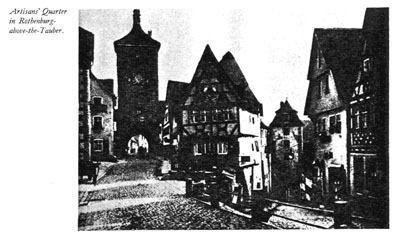 The Teutonic Order extended its conquering expeditions still farther eastward and founded new settlements, which, through trade and the industry of the inhabitants, became wealthy towns.
The Teutonic Order extended its conquering expeditions still farther eastward and founded new settlements, which, through trade and the industry of the inhabitants, became wealthy towns.
Decisive for the growing importance of the towns was the fact that after the first period of mediaeval development, in which every rural community, village or monastery was able to produce everything which it required, the demand for commodities grew very considerably. Markets, where the peasants could dispose of their field-produce, and where merchants sold goods, frequently imported from the Orient via Venice, became a necessity. These were the starting-points from which the cities grew up. Necessary for their growth was the safety of merchant and customer. Markets were set up along the high-roads under the protection of a baronial or bishop's castle. This protection, however, meant at the same time, dependence.
Even in cases where the administration of the community lay in the hands of the citizens, they were not free. Administration by the city itself frequently meant that civic power was the privilege of a few noble families, descendants of the former owners of the ground on which the city was built. The richer the towns grew, the more they felt oppressed by their feudal lords, and the tithes which they were obliged to pay to them. Already in the 11th century, the struggle against this oppression began, and many of the towns succeeded in freeing themselves. The most characteristic example for this development is that of Cologne, which throughout the 11th and 12th centuries fought against the archbishops, finally administering so severe a defeat at the battle of Worringen, that their former overlords thought it more prudent to take up their residence at Brühl.
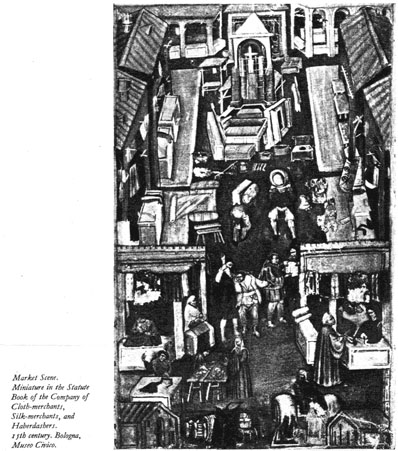 The period of the history of the German towns which was marked by these struggles, was dominated by the rich merchants. It was they who held the reins of municipal government. They formed the City Council, and from their ranks the burgomasters were recruited. The Merchants' Companies were the most select, they and the religious bodies were the most ancient guilds. In English towns like Canterbury, York, and London, they existed already at a very early, date. Commerce was the ruling factor, and the foundation of the Hanseatic League and the power exercised by it in the North Sea and the Baltic, show how very real municipal power was.
The period of the history of the German towns which was marked by these struggles, was dominated by the rich merchants. It was they who held the reins of municipal government. They formed the City Council, and from their ranks the burgomasters were recruited. The Merchants' Companies were the most select, they and the religious bodies were the most ancient guilds. In English towns like Canterbury, York, and London, they existed already at a very early, date. Commerce was the ruling factor, and the foundation of the Hanseatic League and the power exercised by it in the North Sea and the Baltic, show how very real municipal power was.
In countries where the feudal system was not so highly developed, as, for instance, in Germany, progress towards independence was more rapid. In Italy selfadministration was reached early, and allegiance to a feudal lord was merely a formality. The combined cities of Lombardy were not only able to resist the Emperor Frederick Barbarossa, but actually succeeded in gaining a decisive victory.
The Italian cities were spared a great deal of internal strife by the fact that, from the outset, the Trade Guilds enjoyed the same rights as the Merchants' Companies.
In the North both were equally ancient. The dates of the first foundations go back to the 11th century. But the artisans, that is to say, the actual producers, to whose industry the towns owed their wealth, had no share at all in the administration. They were, however, fully aware of their growing importance, and from about 1400 and throughout the 15th century, many German towns were the scenes of bitter internal struggles. These generally ended in the Trade Guilds being admitted to municipal government in a measure which befitted their importance. These struggles were exceptionally bitter in Rothenburg-above-the-Tauber. The groundplan of this ancient free city, which has remained preserved until this day as a unique example of a mediaeval town, furnishes a valuable illustration of its history. The heart of the town is the Herrengasse (Lords' Lane) where the city nobility dwelt. It forms a direct link between the ancient castle and the marketplace, close to which is also the principal church. Straight lines of streets, leading to the great high-roads, radiate from here. The whole was surrounded by a strong wall. Beyond this wall an outer girdle of streets was built, bearing for the most part the name of the trades plied in them. At a later period these streets were amalgamated with the older part, and the whole was enclosed by a new ring of fortifications.
It seems that in England the differences between Merchants' Companies and Trade Guilds were not so marked as on the Continent. We hear of a complaint lodged by the poor citizens of Newcastle-on-Tyne against the Merchants' Guild. The citizens of Scarborough also complained of oppression on the part of wealthy citizens. But on the whole, there appear to have been no actual struggles between merchants and artisans. In London, where, in the opinion of most scholars, no Merchants' Guild existed, the artisans rose, in 1261, against the leading men of the town, who were removed from office. That the "law of the Fullers and Weavers of Beverley" of the year 1209 was intended to free these trades from the domination of the merchants, cannot be said with any degree of certainty. It may have been the settlement of a dispute between the guilds and the authorities. Such disputes were not unknown in London, where the Fishermen's and Weavers' Guilds were for some time at loggerheads with authority, and where, in 1203, the cloth workers' guild was dissolved as a result of a dispute with the city fathers.
The importance of the guilds cannot be over-estimated. Not only did they play a part in the general organization of the city-it fell to each guild to guard and defend a section of the city wall-their mission was also a cultural one. The fact that for centuries mediaeval craftsmanship maintained such a high level, is entirely due to the guilds.
Two factors determined this, the scrupulous care with which every detail of the artisan's training was regulated, and the severe tests of quality, to which every article produced was subjected. The would-be craftsman was apprenticed to a master at about the age of fourteen for a period of, in England seven, in France three to six, and in Germany two to four years according to the particular trade. The treatment was by no means gentle, and the apprentice was also put to a large number of household tasks. In 1682, we are told, a barber's apprentice complained of having to cross the street with buckets of water and to fetch and chop firewood for the maids, though he was already able to treat independently "real plague tumours", and was sent to most influential patients.
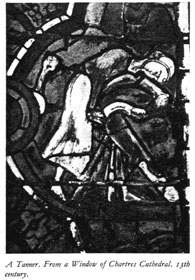 After completing his "journeyman's pieces", which amounted to undergoing a stiff examination, the apprentice was discharged. Subsequent to this, he spent several years in travel, to make himself familiar with the methods in other towns. After these years of wandering, the journeyman might become a master, if he qualified by producing the "masterpieces" prescribed. If it was not always easy to secure an apprenticeship, how much more difficult was it for a journeyman to establish himself as a master, owing to the needless obstacles frequently placed in his way by the guild. In the year 1300, the shoemakers of Breslau declared the dignity of master to be hereditary. There are cases known of exceptional difficulties placed in the way of natives who wished to set up as masters, because it was feared that their competition would be especially dangerous to those already established. The number of workshops was restricted, making it necessary for the master either to buy or marry into one, and he might count himself lucky if a master's daughter and not his widow was part of the bargain. The master-pieces demanded by the guild were often unsaleable and costly, or at least of little practical use. As late as the end of the eighteenth century Goethe complains that the book-binders' masterpiece at Weimar consisted of a Bible bound in the style of the Reformation, instead of a morocco binding of the period. Added to all this, the master was obliged to pay a high fee to the guild, and defray the costs of expensive guild dinners. The consequence was that as no master might work, unless as a member of the guild, a large number of skilful craftsmen remained journeymen until the end of their days.
After completing his "journeyman's pieces", which amounted to undergoing a stiff examination, the apprentice was discharged. Subsequent to this, he spent several years in travel, to make himself familiar with the methods in other towns. After these years of wandering, the journeyman might become a master, if he qualified by producing the "masterpieces" prescribed. If it was not always easy to secure an apprenticeship, how much more difficult was it for a journeyman to establish himself as a master, owing to the needless obstacles frequently placed in his way by the guild. In the year 1300, the shoemakers of Breslau declared the dignity of master to be hereditary. There are cases known of exceptional difficulties placed in the way of natives who wished to set up as masters, because it was feared that their competition would be especially dangerous to those already established. The number of workshops was restricted, making it necessary for the master either to buy or marry into one, and he might count himself lucky if a master's daughter and not his widow was part of the bargain. The master-pieces demanded by the guild were often unsaleable and costly, or at least of little practical use. As late as the end of the eighteenth century Goethe complains that the book-binders' masterpiece at Weimar consisted of a Bible bound in the style of the Reformation, instead of a morocco binding of the period. Added to all this, the master was obliged to pay a high fee to the guild, and defray the costs of expensive guild dinners. The consequence was that as no master might work, unless as a member of the guild, a large number of skilful craftsmen remained journeymen until the end of their days.
Apart from the long period of apprenticeship, the conditions, under which a trade might be learnt, were easier in England. The period of travel was not obligatory, and no masterpiece was demanded.
The journeymen had their own organizations to look after their interests, which did not hesitate to proclaim strikes if they considered it necessary. They were often wild fellows, and the reports of frequent brawling, which often made the use of armed forces necessary to restore law and order, are by no means rare. In this connection one need only mention the rising in the city of London in 1517, known as the Evil May Day, after which the ringleader, John Lincoln, and forty others were hanged.
Though the guilds were utterly ruthless in crushing competition, they were vigilant enough in maintaining a high standard of quality. The methods .of doing so were very effective, especially where valuable materials were used, and falsifying was easy. As, for instance, gold had to be mixed with copper, and silver with tin, to make them workable, every piece turned out had to bear the stamp of the master who made it, of the mastercontroller, and of the guild. This fact is of importance to the antiquary, as we are thus able to fix the origin and date of every piece. The original purpose was, however, to guarantee the quality. The cloth-weavers adopted similar methods. The shoe-makers' guild bought the hides, and passed them on to the various masters. The use of inferior material was strictly forbidden. In this manner the Middle Ages were spared two evils which marred so much the face of the 19th century, slovenly work and ugly substitutes.
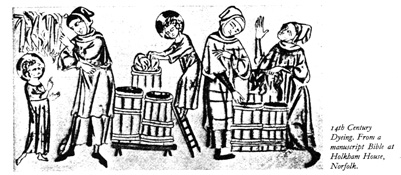
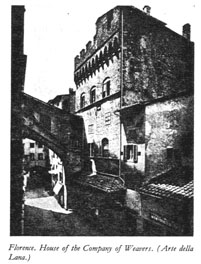 By the middle of the thirteenth century its importance for the cloth-making trade of Florence must have been very great. The dyers were already organized; not being allowed to found a guild, they formed a religious brotherhood, which maintained the church of San Onofrio, the dyers' patron. It was there that they held their meetings. From 1280 they had their own hospital in connection with this church. Two streets of mediaeval Florence were named after them, the Corso de' Tintori and the Via del Vagellai. This latter name designates those who prepared the dye-baths, and is derived from Vagello, a mixture of woad and indigo. If we consider further, that two noted Florentine families are named after dye-stuffs in which they dealt as merchants, i. e., the Rucellai, from Oricella, the lichendye which their ancestor Federigo is said to have discovered in the East, and the della Robbia, the famous family of sculptors, flourishing to this day, who take their name from the madder plant, we shall the better estimate the importance of the trade. In 1 260 the dyers, together with the soap-makers and madder-dealers, had received from the Duke of Athens, then overlord of the city, permission to found a guild. However, the duke's Signoria was ousted after eight months, and the dyers were obliged to return to their former dependence. We see, therefore, that the attempt of 1371 was by no means the first.
By the middle of the thirteenth century its importance for the cloth-making trade of Florence must have been very great. The dyers were already organized; not being allowed to found a guild, they formed a religious brotherhood, which maintained the church of San Onofrio, the dyers' patron. It was there that they held their meetings. From 1280 they had their own hospital in connection with this church. Two streets of mediaeval Florence were named after them, the Corso de' Tintori and the Via del Vagellai. This latter name designates those who prepared the dye-baths, and is derived from Vagello, a mixture of woad and indigo. If we consider further, that two noted Florentine families are named after dye-stuffs in which they dealt as merchants, i. e., the Rucellai, from Oricella, the lichendye which their ancestor Federigo is said to have discovered in the East, and the della Robbia, the famous family of sculptors, flourishing to this day, who take their name from the madder plant, we shall the better estimate the importance of the trade. In 1 260 the dyers, together with the soap-makers and madder-dealers, had received from the Duke of Athens, then overlord of the city, permission to found a guild. However, the duke's Signoria was ousted after eight months, and the dyers were obliged to return to their former dependence. We see, therefore, that the attempt of 1371 was by no means the first.
The situation of the dyers was indeed hard, and the attitude of the guilds towards them was exceedingly selfish, and an unwarranted disregard of justified claims. The popularity of Florentine cloth was in great part due to the beauty of its colours, and the dyers had no little share in bringing about the growing prosperity of the town, which was in great measure the result of the textile trade. Florentine stuffs were much sought after as far north as England. But, of the seven guilds existing in Florence, in 1193, only two, the weavers', or "Arte della Lana", and the cloth-merchants', the "Arte della Callemala", represented this important branch of the city's trade. The lastnamed guild took its name from the busy thoroughfare which connected the Mercato vecchio with the Mercato nuovo, the old market with the new. The two guilds mentioned kept the dyers in a state of complete dependence. The Callemala arbitrarily fixed the prices to be paid to the dyers, and in a statute dated 1301 they proclaimed that materials not dyed according to regulation should be burned, and both the dyer and the person who had ordered the cloth be subjected to a fine. If the dyer, who was generally a poor man, could not pay the fine, he was to suffer the loss of one of his hands. All dyers, from the employer down to the apprentice, were compelled every year to swear fealty to the Callemala. In this manner the "tintori" were treated like the poorest labourers, and placed on a level with their own apprentices.
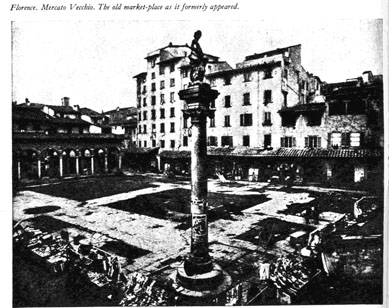 Under these circumstances it will be readily understood that a large number of Florentine dyers emigrated. In 1264 we find them active in Genoa. In other towns flourishing dyers' guilds existed. A guild statute of Lucca, dated 1251, has come down to us; it was about this time that Lucchese silks were becoming world-famous. They were the most popular materials for ecclesiastical vestments, such as have been preserved by the dozen in cathedrals as far north as those of Halberstadt and Danzig. The Lucca guild had, in 1255, its own Capitani or Guardii, an expression also recurring in the North. They were quite independent. The regulations were exceedingly strict. Stuffs not made in Lucca were not dyed by them. A similar ban was placed on old cloths, or such as had been newly made of old thread. In this way the durability of every piece that left the workshops of Lucca was guaranteed. In Poggibonsi near Florence the "tintori" are mentioned in 1175. In Venice too, the trade found a home early. The charter of the guild, the "Mariegola dell'arte dei Tintori" was drawn up in 1429. It contained chiefly the recipes of the guild, and was the source of the important work "Plictho de Larte de Tentori" (Esplicazione dell'arte dei Tintori), published by the Venetian Giovanni Ventura Rosetti in 1540.
Under these circumstances it will be readily understood that a large number of Florentine dyers emigrated. In 1264 we find them active in Genoa. In other towns flourishing dyers' guilds existed. A guild statute of Lucca, dated 1251, has come down to us; it was about this time that Lucchese silks were becoming world-famous. They were the most popular materials for ecclesiastical vestments, such as have been preserved by the dozen in cathedrals as far north as those of Halberstadt and Danzig. The Lucca guild had, in 1255, its own Capitani or Guardii, an expression also recurring in the North. They were quite independent. The regulations were exceedingly strict. Stuffs not made in Lucca were not dyed by them. A similar ban was placed on old cloths, or such as had been newly made of old thread. In this way the durability of every piece that left the workshops of Lucca was guaranteed. In Poggibonsi near Florence the "tintori" are mentioned in 1175. In Venice too, the trade found a home early. The charter of the guild, the "Mariegola dell'arte dei Tintori" was drawn up in 1429. It contained chiefly the recipes of the guild, and was the source of the important work "Plictho de Larte de Tentori" (Esplicazione dell'arte dei Tintori), published by the Venetian Giovanni Ventura Rosetti in 1540.
In the North, conditions were probably very similar, though there is no doubt that in the South luxury was greater, dress richer, and that the dyer's art was raised to perfection much earlier. As is proved by the rules laid down by Charlemagne for his estates, the ideal of the early Middle Ages was the absolute self-sufficiency of every homestead. Even the plants used for dyeing were to be homegrown! With the increase of trade and the rise of the cities this primitive economic system was perforce abandoned. The artisans became important citizens and formed themselves into guilds. In the North, too, weaving and dyeing were dependent on each other. At the beginning of the 12th century the weavers of Oxford and London were granted certain privileges, and at the end of the century the liberties of the weavers of Nottingham, York, Lincoln, and Winchester were confirmed. The weavers of Mayence are mentioned in 1099, those of Worms in 1144. At that time Speyer already boasted a weavers' guild.
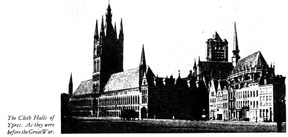 In Germany there appears to have been a guild of dyers in existence as early as 925 in the reign of Henry I. They are also mentioned at Nuremberg before 1300, where they appear already to have formed a guild, and were subjected to strict regulations. The most important cloth-weaving towns, however, were those of Flanders, which actually lived by the textile trade. The Cloth Halls of Valenciennes are mentioned already in 1070. Ypres was the most famous centre, more than 4000 weavers plied their trade there in the 14th century. The mighty Cloth Halls of Ypres are perhaps the most important secular building of the early Gothic period. During the Great War they were completely burnt out, only a bare shell remaining. ('e possess records of Ypres dyers, dating from the second half of the 12th century. In the 14th century, Edward III had dyers brought to England and under Edward IV their guild was recognized by the City of London.
In Germany there appears to have been a guild of dyers in existence as early as 925 in the reign of Henry I. They are also mentioned at Nuremberg before 1300, where they appear already to have formed a guild, and were subjected to strict regulations. The most important cloth-weaving towns, however, were those of Flanders, which actually lived by the textile trade. The Cloth Halls of Valenciennes are mentioned already in 1070. Ypres was the most famous centre, more than 4000 weavers plied their trade there in the 14th century. The mighty Cloth Halls of Ypres are perhaps the most important secular building of the early Gothic period. During the Great War they were completely burnt out, only a bare shell remaining. ('e possess records of Ypres dyers, dating from the second half of the 12th century. In the 14th century, Edward III had dyers brought to England and under Edward IV their guild was recognized by the City of London.
The situation in other cities in the North was similar to that in Florence; as is shown by the Schweidnitz Cloth Weavers' Regulations of 1335. According to them the buying of the most important dye-stuff, woad was entirely in the hands of the weavers. They alone were the responsible guild. No mention whatever is made of the dyers, so that either the dyeing was done by weavers' assistants, or, which is more probable, the dyers were in the service of the weavers, and under their supervision. A similar state of affairs may be inferred from the statutes of the cloth-makers of Bernstadt, dating from 1370, where it was laid down that "they should have a dyeing house and that situated in Bath Lane". A report of 1492, from Grossenhain, tells us that a weaver had to lend his dyeing room for testing the woad. The actual testing was done by a dyer specially appointed for the purpose. The report throws the relative positions of weavers and dyers into clear relief. The dyers were evidently not even allowed a workshop of their own, they worked for the weavers. It even happened that dyers were summoned from the Netherlands to all parts of Germany, a practice which no guild would ever have permitted. Actual guilds of dyers did not exist in Germany until the 16th century, that is, not until after the Middle Ages.
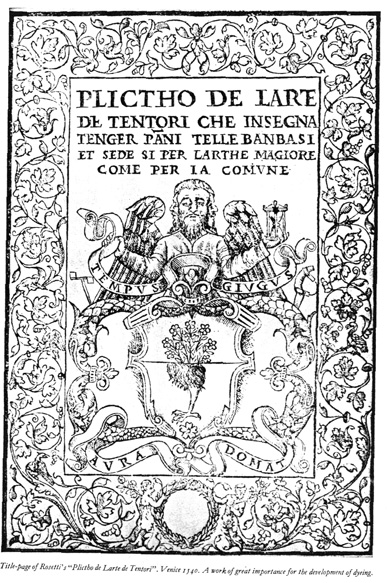 Altogether there were three grades of dyers:
Altogether there were three grades of dyers:
(1) The black or plain dyers. They did not only use black as a colour, but all simple colours, and were fairly numerous. Their guilds were organized as became orthodox craftsmen: apprentices were engaged, and generally served for a period of three years. As a sign of their trade, the journeymen wore a blue scarf when on their travels. Working hours were from 4 a. m. to 7 p. m. The would-be master had to furnish proof of free and honest birth, three years apprenticeship, five years work as a journeyman, and of a travel period of at least three years. The master-piece usually consisted in dyeing forty-eight yards of broad white linen blue, two pounds of woollen thread, also blue, and a similar quantity green. The number of masters was, as usual restricted, at Breslau, for instance, to twenty-six.
(2) The dyers in high colours, to whom finer materials and colours were reserved. They were comparatively few in number, and formed no guild, but were generally in personal touch with each other. The period of apprenticeship varied between four and seven years. The wandering journeymen carried their bundles wrapped in the customary blue cloth, which also served as an apron.
(3) The silk dyers. They were only to be found where the silk worm flourished, being especially numerous in Italy and France. They were not under the jurisdiction of a guild, but were considered as independent artists.
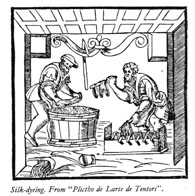 These distinctions appear to have been universal. Colbert, to whom French industry owes so much, published in 1669 a statute for the dyers entitled: "Instruction genrale pour la teinture des laines et manufacture de laine de toutes couleurs et pour la culture des drogues ou ingrediens qu'on y emploie". This decree distinguishes between "teinturiers en bon teint" and "teinturiers en petit teint", which corresponds exactly to the German "Schwarzfrber" (plain dyer) and "Schnfarber" (dyer in high colours). Such ill-defined distinctions naturally led to encroachments, in Saxony, for instance, the plain dyers attempted to usurp colours to which they had no right, calling themselves "Schwarz- und Schonfarber"; under this new name they were united by a decree of the Elector of Saxony with the existing plain dyers. In Saxony they had three large "Laden" (ark or chest), as the guilds were called. The name is taken from the chest holding the statutes of the guild, which stood open on the table while business was being transacted.
These distinctions appear to have been universal. Colbert, to whom French industry owes so much, published in 1669 a statute for the dyers entitled: "Instruction genrale pour la teinture des laines et manufacture de laine de toutes couleurs et pour la culture des drogues ou ingrediens qu'on y emploie". This decree distinguishes between "teinturiers en bon teint" and "teinturiers en petit teint", which corresponds exactly to the German "Schwarzfrber" (plain dyer) and "Schnfarber" (dyer in high colours). Such ill-defined distinctions naturally led to encroachments, in Saxony, for instance, the plain dyers attempted to usurp colours to which they had no right, calling themselves "Schwarz- und Schonfarber"; under this new name they were united by a decree of the Elector of Saxony with the existing plain dyers. In Saxony they had three large "Laden" (ark or chest), as the guilds were called. The name is taken from the chest holding the statutes of the guild, which stood open on the table while business was being transacted.
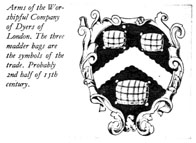 The guilds were entitled to a coat of arms. This was rarely composed of heraldic symbols like the eagle borne by the dyers of Bruges. As a rule products of their trade were made use of. The dyers of London bore three madder-bags in their crest, the silk dyers of Nuremberg a skein of silk, bound in yellow, the plain dyers four bales of cloth, red, blue, yellow, and white, surmounting each other. The crest of the moleskin dyers of the same city consisted of the dyer's cauldron over which a piece of red cloth was suspended from a spindle.
The guilds were entitled to a coat of arms. This was rarely composed of heraldic symbols like the eagle borne by the dyers of Bruges. As a rule products of their trade were made use of. The dyers of London bore three madder-bags in their crest, the silk dyers of Nuremberg a skein of silk, bound in yellow, the plain dyers four bales of cloth, red, blue, yellow, and white, surmounting each other. The crest of the moleskin dyers of the same city consisted of the dyer's cauldron over which a piece of red cloth was suspended from a spindle.
Even for the Middle Ages, the supervision of the work, the principal function of the guilds, was very strict indeed. The peasants were only allowed to grow a certain amount of woad, the chief dye-stuff. No dyer was permitted to go out to the villages and buy up the precious product ahead of his colleagues. The peasants brought the woad in to market, where it was often subjected to a test, before being sold. In Erfurt the right of purchase was, in 1480, expressly limited to citizens of the town.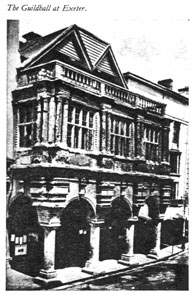
The next step was the process of refining, which was carried out by the woad merchant. It consisted chiefly in fermentation, and in the following spring the woad was usually ready for the dyer. Each barrel was tested, the merchant affixed his stamp, the controller the seal of the city. "No one may sell untested woad" was one of the rules laid down by the Cloth-Weavers' Regulations of Schweidnitz n 1335. Especially interesting in this respect are the regulations of the Saffron Guild of Basle, which imported costly foreign dyestuffs. All these dyes were pounded in the mortars of the guild, where a close watch prevented falsifying. We have detailed knowledge of the charges made for the pounding of saffron, gall, and brazil-wood. The pounding was done by water-power. What dyes might be used, was determined by fixed rules. When large quantities of indigo began to find their way to Europe, the authorities had grave misgivings about permitting its use by the dyers. The reason for this was probably not so much the fear that indigo would mean the end of woad growing, but rather the belief that the new dye was harmful, and destroyed the fabric. This was probably due to the inexpert use of the arsenic bath, for which indigo had to bear the blame. In ip it was described by the Frankfort Police Regulations as "the newly invented, harmful and balefully devouring corrosive dye, known as devil's dye". But though as late as 1664 and after, decrees were issued against the use of indigo, the new dye speedily became popular and in Hamburg it was officially admitted already in 1610. The actual process of dyeing went on in dye-houses, the possession of which was made obligatory to the weavers' guilds (Bernstadt 1370). In some cases, especially where guilds were too small to keep up a house, dye-rooms are mentioned. In any case, the dyeing always took place in a separate room under supervision. In early days, the same woad bath was not used more than twice, later, as the industry grew, up to twelve times. The maximum amounts of cloth to be dyed from one bath was however always prescribed. In 1387, the town of Aix-la-Chapelle laid down, how much wool might be dyed at a time in a given quantity of dye and a given number of baths; in other towns, dyeing was permitted once a day only. Every guild had regulations of a similar drift, all serving to prevent the produce of the town from acquiring a bad name. The finished cloth was subjected to a final test at the hands of masters appointed by the guild. In Florence they were known as the "Stain and Blemish Officials", and after they had completed their test the bales were sealed at both ends with the seal of the Arte della Callemala, an eagle holding a bale of cloth, thus integrity of workmanship was guaranteed. This method of guaranteeing dye and quality was also customary in the North. The scale of quality which was followed - the goldsmiths tests were carried by means of variously alloyed needles - was known as the Stal, a word occurring in the London Stal or Steel Yard, and in the name "Staalmesters", the title given to the heads of the weavers' guild, and immortalized by Rembrandt's great painting.
In this manner the dyer's work was not only subject to the strict supervision which characterized the mediaeval guilds, but the dye had to pass three additional tests before it was sold.
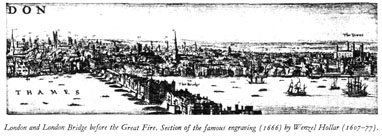
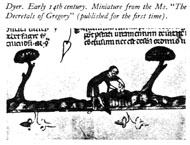
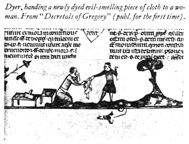 Mediaeval civilization may be divided into two distinct parts, the first ending with the 12th century, and the second comprising the 13th and 14th centuries. The early period produced the severe and massive style of architecture known as Romanesque or, in England, Norman, while the later period lives on in the soaring beauty of the Gothic style. Equally marked are the differences in everyday life. Book-illustrations and painted sculpture tell us that the dress of the early Middle Ages was coarse, giving preference to wool and linen, frieze and leather, whereas that of the later period was gay and costly. The age of chivalry, of courtly custom and courtly love, appreciated to the full the aesthetic value of refinement and taste.
Mediaeval civilization may be divided into two distinct parts, the first ending with the 12th century, and the second comprising the 13th and 14th centuries. The early period produced the severe and massive style of architecture known as Romanesque or, in England, Norman, while the later period lives on in the soaring beauty of the Gothic style. Equally marked are the differences in everyday life. Book-illustrations and painted sculpture tell us that the dress of the early Middle Ages was coarse, giving preference to wool and linen, frieze and leather, whereas that of the later period was gay and costly. The age of chivalry, of courtly custom and courtly love, appreciated to the full the aesthetic value of refinement and taste.
In former days cloth was spun and woven at home, from home-grown flax or the wool of native sheep, and dyed with extracts from native plants. Foreign dyes were to a certain extent imported, but into Italy and England, rather than to Germany, and that only occasionally as yet. Costly stuffs and articles of dress were, however, imported readymade. During the later period, parti-coloured dress came into vogue, consisting of perhaps, a doublet in two colours with similar hose where the right leg might match the left half of the doublet and vice versa. It was not without reason that the dyer's craft began to flourish at this time.
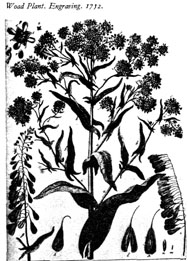 To trace the history of dyeing in the Middle Ages is to make an interesting study of the progress of refinement generally. In the 43rd Chapter of the instructions concerning the administration of his lands, Charlemagne decreed that not only flax and wool, but also "waisdo, vermiculo, varentia", that is, woad, cochineal dye, and madder should be produced. Woad was the most important dye of the Middle Ages. It might be described as a universal dye. The richness of the shade achieved depended on the quality and quantity of the woad used, and on the frequency with which the cloth was immersed in the bath. Thus a fresh bath would be used for dyeing black, then, as the solution grew weaker, for blue and, finally, green. By the addition of madder a species of purple was attained. The principal woad-growing districts were Saxony and Thuringia, whose wealth actually was based on this plant. In Thuringia it was proverbial that the woadfields were the country's gold and silver mines. Erfurt and Naumburg were the centres.
To trace the history of dyeing in the Middle Ages is to make an interesting study of the progress of refinement generally. In the 43rd Chapter of the instructions concerning the administration of his lands, Charlemagne decreed that not only flax and wool, but also "waisdo, vermiculo, varentia", that is, woad, cochineal dye, and madder should be produced. Woad was the most important dye of the Middle Ages. It might be described as a universal dye. The richness of the shade achieved depended on the quality and quantity of the woad used, and on the frequency with which the cloth was immersed in the bath. Thus a fresh bath would be used for dyeing black, then, as the solution grew weaker, for blue and, finally, green. By the addition of madder a species of purple was attained. The principal woad-growing districts were Saxony and Thuringia, whose wealth actually was based on this plant. In Thuringia it was proverbial that the woadfields were the country's gold and silver mines. Erfurt and Naumburg were the centres.
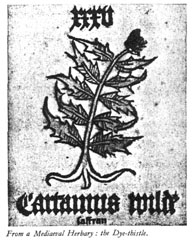
In Silesia, too, woad was grown, but not enough to supply the needs of that area, whereas Saxony and Thuringia were export countries. How truly enormous the output was, is demonstrated by the fact that in Grlitz alone it amounted, in 1477, to 9000 measures valued at 360,000 guilders. In the 14th century the quantity used at Nuremberg is given as 103, in the 15th century, as au waggon-loads. In Thuringia woad was grown in more than 300 villages, to the value of at least 450,000 Meissen guilders. One merchant of Erfurt sold 125,000 guilders worth of woad in 1617. It was exported to all the important weaving centres, especially to Flanders. Antwerp imported large quantities. Very considerable amounts appear to have found their way to England in the 14th and 15th centuries, through the medium of the Hanse. France too, supplied England with woad already in the early Middle Ages, and in 1420 imports of coccus polonicus for scarlet dyeing are reported. The mediaeval merchant's life was not without its dangers. Accidents on the roads were frequent, and highway robbery by no means a rare occurrence. We owe our accurate knowledge of the value of various dyes to the claims for damages presented by merchants whose goods had fallen into the hands of privateers. In times of war it was the custom of both parties to grant letters of marque. Trade with England suffered very much from this legitimate nuisance. Nevertheless, England was an important customer for Germany in the woad trade as late as the 17th century, though it was by that time not only a woad-growing country itself, but also imported indigo, a practice supported by the government at the expense of the native woad production.
It was indigo which finally crushed the woad trade, in spite of every imaginable obstacle placed in its way. The use of indigo was forbidden by law, and the report put about that it ruined the texture of the cloth. Bitter complaints were voiced, that "gold was given to the Dutch for a worthless dye, while the woad industry of Thuringia was allowed to fall into decay". It was of no avail, indigo won the day. Madder-growing however, held its own until the 19th century. This brilliant red dye, made from the roots of rubia tinctorum, was known to the ancients, and also used in various forms in the East. It was exceedingly popular in Europe, in fact, the principal red dye. In the 13th century its cultivation already yielded a considerable revenue in taxes and duties. Madder was grown practically all over Germany, and exported in large quantities, from Magdeburg to Poland in the 14th, and to Flanders, Italy, and England in the 15th century. Norwich appears to have been an important English centre of the trade, as the name of one of its streets, Madder Market, would seem so suggest.
The production of the scarlet dye habitually used, was less easy. It was actually gained from a species of parasite, the cochineal insect, picked from the plants by serfs. The exports of this dye from Germany to Flanders were considerable, and a Venetian authority esteems its quality more highly than that of the Levantine product.
The end of the Middle Ages is foreshadowed by the preponderance of imported dye stuffs. Nearly all of these were known to the Middle Ages, but very rarely used, probably because of the prohibitive costs. It was not until the discovery of the passage to India made imports on a large scale possible, without the heavy costs of intermediary trade, that they really became popular, especially as the same dyes were found to occur in America. The dyes in question were brazil-wood, orseille, saffron, and safflor, as well as lacmus and indigo.
Only the most important of these can find mention here. Brazil-wood, the wood of caesalpina sappan, is mentioned in 1321, and then frequently about 1400. It came from Sumatra, Ceylon, and India, via Venice, where it was valued in 1409 at 28-36 ducats per cwt. In America it was found in such quantities that a whole country received the name of Brazil.
The dyeing qualities of orseille are said to have been discovered in about 1300 by a Florentine merchant, whose family was called Ruccellai after it. It seems more probable that he became acquainted with the dye in the Levant and then found it again in Italy. After the conquest of the Canary Islands, the dye was imported from there straight to Germany. Lichen dyes, such as lacmus, were known in Germany in the Middle Ages, they were bought in Norway by the Hanse merchants, and exported to Germany and England. The first record of this practice dates from 1316.
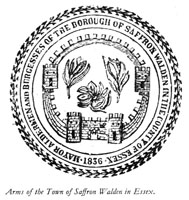 Saffron was perhaps more popular as a spice than as a dye. It was one of the chief trade commodities, and the beauty of its yellow blossoms invariably excited admiration. The most important of the Merchants' Companies of Basle was known as "the Saffron". The saffron lily was its coat of arms, and also that of Florence, and of the Town of Saffron Walden in Essex. In Semifonte, a town destroyed in 1202 by the Florentines, it was considered easier to raise money on a couple of pounds of saffron than by mortgaging real estate. In 1224 a pound was valued at 24 solidi in San Gimignano, as compared with 19-20 solidi six years earlier. Its value was evidently increasing.
Saffron was perhaps more popular as a spice than as a dye. It was one of the chief trade commodities, and the beauty of its yellow blossoms invariably excited admiration. The most important of the Merchants' Companies of Basle was known as "the Saffron". The saffron lily was its coat of arms, and also that of Florence, and of the Town of Saffron Walden in Essex. In Semifonte, a town destroyed in 1202 by the Florentines, it was considered easier to raise money on a couple of pounds of saffron than by mortgaging real estate. In 1224 a pound was valued at 24 solidi in San Gimignano, as compared with 19-20 solidi six years earlier. Its value was evidently increasing.
Indigo became the most popular of all dyes. It was without doubt known to the Middle Ages. Marco Polo, that daring adventurer who travelled through Asia at the end of the 13th century, and whose vivid account of his travels is one of the most important sources of our knowledge for that period, refers to indigo and brazil-wood, which he calls sappan, as to something familiar. He describes in detail "the manufacture of indigo in the kingdom of Kulam on the west coast of India, where it is produced in great quantities and in excellent quality. It is won from a species of herb, which is plucked out by the roots, and put into tubs of water, where it is left to rot. Then the sap is pressed out, which, when exposed to the sun, evaporates, leaving a kind of paste behind it, which is cut up into small pieces of the shape also familiar to us". In Gujerat and Cambai in North West India he also found indigo production.
The great advantage of indigo over the native woad consists in a concentration of pigment equal to ten times that of its rival, and which is extracted in the manner described above.
It is an interesting detail in the development of civilization to trace how the native dyes were superseded by gall, logwood, and brazilwood, and how indigo assumed the position formerly held by woad. Today it, too, has been driven from the market, together with all the other natural dyes, by the aniline dyes. Even in the bazaars of India only European dyes are to be found today and in the workshops of the Indian dyers we should seek in vain for even a scrap of indigo.
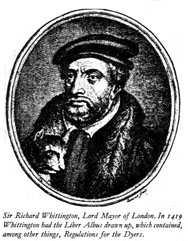
The word guild means sacrifice or feast, and takes us back to the early Germanic, preChristian days. In fact, guilds existed in England before the Norman Conquest; and some of their statutes have come down to us. Their chief purpose was mutual assistance in times of spiritual or material distress. The "Eranos" of ancient Athens was a similar institution.
After the Conquest, the guilds appear at first to have suffered from oppression as peculiarly Anglo-Saxon institutions. In the course of time, however, the idea, which had never been finally crushed, awoke to new vigour. At an early date English cities were granted Royal privileges, among these was the right to found a guild. In the course of the 12th, 13th, and 14th centuries, charters confirming or constituting guilds were granted to a large number of towns. Among these were Andover, Beverley, Bedford, Cambridge, Canterbury, Durham, Gloucester, Ipswich, Lancaster, Leicester, Liverpool, Norwich, Nottingham, Oxford, Shrewsbury, Southampton, Windsor, Worcester, York and many others. The aims of these guilds were for the most part mercantile, granting as they did to their members-on payment of a feefreedom from tolls and duties, and immunity from foreign jurisdiction. At the same time, the guilds began to gain considerable influence in the administration of these towns. Their most important function in this respect was the organisation of trade, both wholesale and retail, and for that reason membership was not only much sought after by merchants in the stricter sense of the word, but by citizens of nearly every estate and trade. For, although outsiders were not prevented from plying their trades, they were obliged to pay a considerable fee to the authorities for that privilege. Thus it came about that strangers as well as natives of the city in question profited by becoming members of a guild. On application for admittance the would-be member had to find sponsors, and to bind himself by oath to observe the laws of the guild. Furthermore, he undertook to inform the alderman of any strangers in the town, who might come to his notice and were eligible as members of the guild. He also bound himself to observe secrecy in all matters concerning the guild, which were usually discussed at the "morwenspeche", the "morning-speech", regular meetings at which the business of the guild was transacted. If a member broke his oath, or failed to observe secrecy, he was liable to be expelled from the guild and to forfeit his civic rights. In some cases he might even be outlawed. Members were bound to "scot and lot", to financial and military service, strangers to the city, however, only to the former.
Compared with these merchants' guilds or companies, the actual trade guilds played at first only a subordinate part, though they also existed at a very early date. They were subject to royal permission, for which they had to pay a certain sum. In 1164 the following guilds paid for this permission the sums mentioned below.
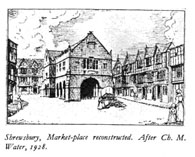
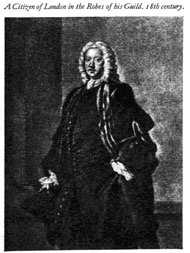 The fact that, in the earliest period, we hear little or nothing of dyers' guilds and tradeguilds in general may be due to the state of affairs described above, or to the fact the dyers were in any case classed as weavers' assistants. Already in Anglo-Saxon days, cloth was dyed with madder imported from France. Towards the end of the 8th century the kingdom of Mercia exported woollen cloth. Even before the Conquest Norman dyers had settled in London, which was probably one of the principal ports of the dye trade. Between 1000 and 1050, the word madder occurs in Anglo-Saxon manuscripts. After the Conquest, especially at the beginning of the 1 2th century the dyer's trade is frequently mentioned, the name Lister, Litster, and Litester (dyer) occuring again and again.
The fact that, in the earliest period, we hear little or nothing of dyers' guilds and tradeguilds in general may be due to the state of affairs described above, or to the fact the dyers were in any case classed as weavers' assistants. Already in Anglo-Saxon days, cloth was dyed with madder imported from France. Towards the end of the 8th century the kingdom of Mercia exported woollen cloth. Even before the Conquest Norman dyers had settled in London, which was probably one of the principal ports of the dye trade. Between 1000 and 1050, the word madder occurs in Anglo-Saxon manuscripts. After the Conquest, especially at the beginning of the 1 2th century the dyer's trade is frequently mentioned, the name Lister, Litster, and Litester (dyer) occuring again and again.
About the middle of the 12th century the weavers of York were granted the right of making dyed and striped cloths for the whole of Yorkshire. This shows that at that time the dyers were not recognised as independant craftsmen. Spanish merchants came to Beverley, Stamford, and York, to buy scarlet cloth. "Beverley blue" and "Pan de Carleta" were colours well-known in the 13th century.
In 1188 we find the first mention of a dyer's guild, and that in London. It had evidently existed at least a year before that, but the exact date of its foundation cannot be determined. At the same time, during the reign of Henry II, several English towns were producing dyed cloths, which were greatly in demand. With the second half of the 13th century the English wool-production increased very greatly, but almost all of it was exported. In 1284, 200 monasteries are recorded as exporting wool to Flanders. It was not until the beginning of the 14th century that the native textile trade began on a large scale, and with it English dyeing grew in importance. This development was favoured by the exhausted state of the Royal Treasury. On May 1st 1326 a law was passed, forbidding the wearing of foreign stuffs, and granting greater liberties to the weavers, fullers, and dyers. Members of the Court, the nobility, and others who paid a yearly rental of at least £ 30 were not affected by this decree. The growth of the guilds corresponds to this development. In 1400, a list of the members of the York Guild gives the names of 50 weavers, 50 tapestry weavers, 59 dyers, and 30 fullers. Taking a total population of about zooo families, the number of members of the textile guild of York may be estimated at 250 in that year. This great increase in importance was no doubt partly due to the immigration of Flemish weavers (1346-50), but was not brought about by it. Henry I had already summoned Flemish craftsmen to England. In the second half of the 15 th century, the Flemings were recognised as a guild of the City of London.
 In England, as elsewhere, it was more than once necessary to define the boundaries between the trades, and to protect members against infringements of their rights. The liber albus of 1419, ascribed to the legendary 'Lord Mayor, Sir Richard Whittington, takes the part of the dyers against the interference of the merchant strangers.
In England, as elsewhere, it was more than once necessary to define the boundaries between the trades, and to protect members against infringements of their rights. The liber albus of 1419, ascribed to the legendary 'Lord Mayor, Sir Richard Whittington, takes the part of the dyers against the interference of the merchant strangers.
Towards the end of the 14th century the political rights of the different estates in the cities were more or less clearly defined and balanced. This called from Chaucer some optimistic verses in his Canterbury Tales, in which he also mentions the dyers, who, like the haberdashers, carpenters, weavers, and tapestry-weavers "wear the livery of a great and serious brotherhood". About the same time, the political importance of the craftsmen's guild began to increase. Somewhat later, following the decrees of Edward IV Of 1468 and 1475, the 12 livery companies among the London guilds are consulted at the election of mayors, sheriffs, and members of Parliament. Furthermore, the Lord Mayor must be a liveryman. This preferred position finds its expression in the name of the ia companies; liverymen are those who are entitled to wear a garb of office.
In Scotland, the dyer's trade was regulated by law under David I. (1124-53). But the trade sank so low in the social scale during the 12th century that some merchants' guilds considered the mere fact of a member's being a dyer reason enough for his expulsion. Dyers who were members of a guild, were forbidden by law to have anything to do with the woadtrade. Infringements of this law were severely punished.
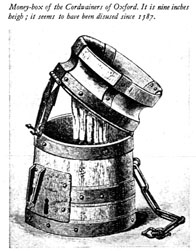 When Alexander II of Scotland (1198 to 1249) granted a charter to Aberdeen in 1222, it included the right to found a guild, from which weavers and fullers were expressly excluded. At the same time, persons who were not members of the guild, were forbidden to make cloths, dyed or otherwise. This put weavers and fullers at the mercy of the merchants. Characteristically enough, the dyers were not mentioned at all, evidently they were considered to be no more than weavers' assistants.
When Alexander II of Scotland (1198 to 1249) granted a charter to Aberdeen in 1222, it included the right to found a guild, from which weavers and fullers were expressly excluded. At the same time, persons who were not members of the guild, were forbidden to make cloths, dyed or otherwise. This put weavers and fullers at the mercy of the merchants. Characteristically enough, the dyers were not mentioned at all, evidently they were considered to be no more than weavers' assistants.
In Perth and Stirling, too, the weavers and fullers were denied admission to the guilds, and even in England Edward I attempted similar restrictions for London, Winchester, Marlborough, Oxford, and Beverley. Apart from the organized craftsmanship of the towns, there were, in the rural districts, independant dyers, who plied their trade by permission of the nobleman who was their overlord. Sometimes this permission was granted to one dyer only. In 1364 a certain Walter Lister of Leeds acquired the office of dyer for Bradforddale, for which privilege he paid four shillings a year.
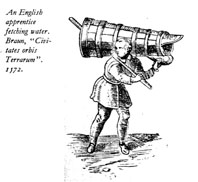 As well as the merchants' and craftsmen's guilds, a large number of religious brotherhoods, similar to those known on the Continent, were founded in England in the 14th century. The Black Death struck terror into the hearts of whole nations, and led to a widespread revival of religious life. These brotherhoods were for the most part recruited from the lower classes of the population, the artisans, though Coventry had a brotherhood of merchants. These organisations generally bore the names of saints or churches, hence such names as Corpus Christi Guild in York, Holy Trinity Guild in Norwich, Guild of St. Michael in Lincoln, etc. Very often men of all classes and professions belonged to the same brotherhood, and strangers were also admitted. The number of members was often very great, thus the lists of the Corpus Christi Guild in York give 14,850 (?) names. Here too, the newly-enrolled member paid his fee, and was bound by oath. The brethren wore uniform dress. The support of the poor and sick, of brethren in prison, burial of the dead, and masses for their souls, in short, all the attributes of an exemplary life, were demanded of the members. The resemblance of these brotherhoods to the pre-Norman guilds is very noticeable.
As well as the merchants' and craftsmen's guilds, a large number of religious brotherhoods, similar to those known on the Continent, were founded in England in the 14th century. The Black Death struck terror into the hearts of whole nations, and led to a widespread revival of religious life. These brotherhoods were for the most part recruited from the lower classes of the population, the artisans, though Coventry had a brotherhood of merchants. These organisations generally bore the names of saints or churches, hence such names as Corpus Christi Guild in York, Holy Trinity Guild in Norwich, Guild of St. Michael in Lincoln, etc. Very often men of all classes and professions belonged to the same brotherhood, and strangers were also admitted. The number of members was often very great, thus the lists of the Corpus Christi Guild in York give 14,850 (?) names. Here too, the newly-enrolled member paid his fee, and was bound by oath. The brethren wore uniform dress. The support of the poor and sick, of brethren in prison, burial of the dead, and masses for their souls, in short, all the attributes of an exemplary life, were demanded of the members. The resemblance of these brotherhoods to the pre-Norman guilds is very noticeable.
In post-Reformation days the guilds gradually lost their original importance. But few of them, the watermen, goldsmiths, apothecaries, founders, and printers, have in London preserved certain functions connected with their trade or profession until this day. Most of the dyers' guilds were dissolved; the London guild still exists and plays some part as a charitable organization, and also in the administration of the City.
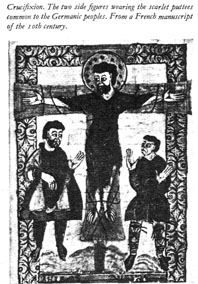
Mediaeval Love of Colour
By A. Chevalier
The poets and painters of the Romantic period loved to represent the Middle Ages as bathed in magic moonlight, a light in which all colours were blended into one subdued harmony. It is indeed difficult to realize that the mysterious, silent grey, in which buildings and statuary are shrouded today, was once a blaze of gorgeous colour. The Middle Ages loved bright colours. The interior of the churches, the windows, and statues, the faades of palaces and houses, as well as their tapestries arid hangings, all were resplendent in gay colours. And most colourful of all was the garb of mediaeval man.
This love of colour has two sources, Roman-Byzantine antiquity, with its preference for the pomp of Oriental ceremony, and the naive delight in colour which distinguished the hunting and agricultural peoples of the pre-Christian epoque. Classical antiquity held white to be noblest colour, but already towards the close of the second century closefitting, long-sleeved woollen garments became fashionable among the wealthy sons of Rome; these, like the short linen trousers, were coloured. This fashion was not of Oriental, but rather of Germanic origin. In the earliest period of their history the Germanic and Gallic tribes painted their bodies, as was, and is the custom among many hunting tribes. At the time of the Romans, this practice, originally bound up with totem beliefs, had been transferred to the clothing, which was generally striped or checked. These peoples had learnt very early to dye their stuffs in the wool; it is therefore not surprising that their natural love of colour led them to admire and imitate the gorgeous dress of the late Roman period. Since Diocletian, the Roman emperors had enforced a rigid etiquette in the use of colours, especially with regard to the purple mantle of Chinese silk, which became sacrosanct. The Gothic princes of the Dark Ages, and after them the Merovingians, adopted this privilege, but the shifting social order of these unstable empires made it easy for others, especially for the warriors, to infringe on this privilege. Nevertheless, red was still a noticeable colour. If the major domo Bertwald could call to his enemy Landerick, that they would recognize each other in the battle by the red of their cloaks, this colour cannot yet have been too common.
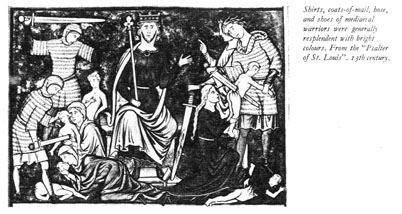 Even the working classes did not go about in utter drabness in those days, on the contrary, the ancient tradition of the striped dress, especially for festive occasions, held its own for a long time, though simple shades of grey, brown, yellow, and green were preferred for work. Charlemagne, whose own dress was of the plainest, is said to have prescribed quiet grey as a colour for the common people. Though such laws were often renewed, they were only observed while means would not permit of the acquisition of gayer and costlier clothing. Only in workingdress has the simplicity of these early laws been observed, and remains so to this day, in the shape of the long loosefitting blue blouse worn by the French peasant. Otherwise the Frankish dress was almost screamingly colourful. An eighth century monk of the monastery of St. Gallus gives a detailed description of the red trousers and scarlet leggings, the grey or blue cloak, surmounting a yellow or green coat, and the red cap. Soon, however, tastes grew more refined, the nobles became more cultured under the influence of Christendom and the Orient, and the shrill clash of strident colours disappeared. Whilst the shirt-like undergarment remains white, the wide coat, the cloak, cap, girdle, and shoes, are of subdued colours, embellished with gold-worked ornaments of geometrical or, under Byzantine influence, of pictorial character.
Even the working classes did not go about in utter drabness in those days, on the contrary, the ancient tradition of the striped dress, especially for festive occasions, held its own for a long time, though simple shades of grey, brown, yellow, and green were preferred for work. Charlemagne, whose own dress was of the plainest, is said to have prescribed quiet grey as a colour for the common people. Though such laws were often renewed, they were only observed while means would not permit of the acquisition of gayer and costlier clothing. Only in workingdress has the simplicity of these early laws been observed, and remains so to this day, in the shape of the long loosefitting blue blouse worn by the French peasant. Otherwise the Frankish dress was almost screamingly colourful. An eighth century monk of the monastery of St. Gallus gives a detailed description of the red trousers and scarlet leggings, the grey or blue cloak, surmounting a yellow or green coat, and the red cap. Soon, however, tastes grew more refined, the nobles became more cultured under the influence of Christendom and the Orient, and the shrill clash of strident colours disappeared. Whilst the shirt-like undergarment remains white, the wide coat, the cloak, cap, girdle, and shoes, are of subdued colours, embellished with gold-worked ornaments of geometrical or, under Byzantine influence, of pictorial character.
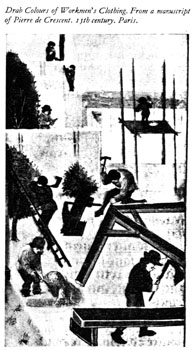 It is probable that, until the twelfth century, the town dwellers, who were at that time for the most part artisans, wore sober workingday colours. But from the time of the first Crusades onward the city fathers, who had become merchants, began to imitate dress and customs of the nobility; they could afford to strut in green hose and orange or purple doublet, while the privileges which the nobility strove to enforce against these encroachments, only served, as Montaigne later resignedly remarked, to increase the desire for imitation.
It is probable that, until the twelfth century, the town dwellers, who were at that time for the most part artisans, wore sober workingday colours. But from the time of the first Crusades onward the city fathers, who had become merchants, began to imitate dress and customs of the nobility; they could afford to strut in green hose and orange or purple doublet, while the privileges which the nobility strove to enforce against these encroachments, only served, as Montaigne later resignedly remarked, to increase the desire for imitation.
When the European silk-industry made this hitherto extremely expensive and, as such, distinctive material accessible for the common people, the nobility began to clothe themselves in the colours of their coats of arms with the heraldic symbols painted or embroidered on this background. Very soon, everyone connected with the family, down to the lowest menial, wore these colours. In this way the strange parti-coloured style of dress developed and persisted until the 16th century, where the wearer was clad from head to foot in two and sometimes four, vertical lines of colour. The sudden rise of the cities drove the nobility back to their castles, where they reached, at the beginning of the 13 th century, the highest peak of courtly refinement. In accordance with this development, their dress and tapestries, though costly enough as to material, became more restrained and refined in colour.
 The parti-coloured dress, originally peculiar to noble families, became a kind of uniform or livery for their dependants, and was then adopted by the population of the cities, who still considered it something highly aristocratic. Finally it found its way to the rich -peasantry of South Germany, whose love of display the poet Neithart von Reuenthal deplores in his verses.
The parti-coloured dress, originally peculiar to noble families, became a kind of uniform or livery for their dependants, and was then adopted by the population of the cities, who still considered it something highly aristocratic. Finally it found its way to the rich -peasantry of South Germany, whose love of display the poet Neithart von Reuenthal deplores in his verses.
The towns adopted colours at a very early date. A Paris chronicle of the 14th century describes in detail a procession of sheriffs, aldermen, guild-masters, and all the other municipal officials, whose dress, red on one side and white on the other, represented the colours of the city. When Etienne Marcel headed the rising of the citizens of Paris against the nobility, he created a special kind of head-gear, whose colours, red and blue, had special significance, red was the people's colour, blue that of the king, the rising was not directed against the king, but only against his vassals. As the ancient symbolic meaning of the different colours was still latent in the minds of the people, the trade guilds began to adopt colours, and soon we find every trade displaying its peculiar colours in dress and banners.
This colour symbolism also found its way into private life, lovers affected the same colours in their dress, and at the time of the minne-singers and troubadours a quaint code was evolved, in which the different colours stood for certain moral or spiritual qualities.
The restraint observed by the nobility found no echo among the common people save in Italy, where an ancient tradition prevented the crudities which were so frequent in the North. In Italy, too, we find in the 13th and 14th centuries rich and gorgeous colours, but even peasants and artisans appear to have avoided jarring clashes of colour.
In the fifteenth century, however, all nations and all classes indulged in a wild riot of colour. The great increase of trade, the growing wealth of the communities, and the decay of the old social order, seem to have produced a species of intoxication. Down to the well-to-do peasants stuffs were worn, whose inherent shimmer tended to heighten the effect of the colours. The nobility strutted in velvet and brocade, the parti-coloured dress became a multi-coloured play on various shades of colour. Over the delicate texture of their high-crowned bonnets the women wore veils of brilliant hue, their green or blue skirts were caught up by scarlet girdles, showing the tapering points of shoes blue or red. Those who could afford it, added the gay sparkle of a profusion of gems. The hair was dyed to an auburn hue, and cosmetics were made lavish use of by both sexes. Great was the influence of the theatres, which outdid each other in gorgeous costumes.
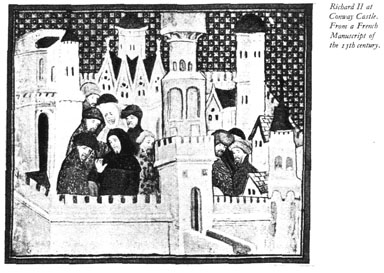 One class only stood apart at the end of the Middle Ages, that class whose successors were to determine the outlook of the coming centuries, the humanists, whose severely cut cloaks of sombre hue were adorned with nothing more colourful than a trimming of brown fur.
One class only stood apart at the end of the Middle Ages, that class whose successors were to determine the outlook of the coming centuries, the humanists, whose severely cut cloaks of sombre hue were adorned with nothing more colourful than a trimming of brown fur.
The social order of the Middle Ages was, with all its intricate structure, in some respects fairly simple, and the terms applied to it may sometimes be used in their most literal sense. Thus wealth of colour or dearth of colour mean no more than that, while the rich could indulge their taste for brilliant colours, poorer people had to remain content with more sober plumage.
The tension between peasants and landless labourers on the one hand and between landowners and the state on the other, had already approached the breakingpoint, when the king, who was in great financial difficulties, in 1381 imposed a tax of one shilling on all persons over 15 years. This was the signal for an upheaval, in which the peasants were ably supported by the landless labourers.
The ringleader of the rising in the eastern counties of Essex and Kent was Wat Tyler, who was stabbed by the Lord Mayor of London, William Walworth, under the eyes of his peasant adherents. Nevertheless, the rebellion spread from Kent to other districts, and in Norfolk especially, the peasants put a stubborn resistance. A Norwich dyer, Lohn Litster (litster is the Middle English equivalent for dyer), placed himself at their head, styling himself "King of the Com- mons". Nobles who had been captured by his follow- ers, were forced to wait upon him at table. At last Henry le Despenser, the warlike Bishop of Norwich, succeeded in surprising Litster's camp, and in overpo- wering, his undisciplined peasants. Litster himself was taken prisoner, and by order of the bishop hanged, drawn, and quartered. W. B.
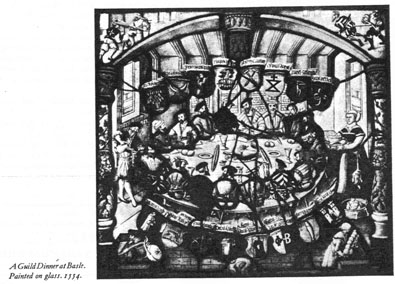 Guild Dinner in the Middle Ages
Guild Dinner in the Middle Ages
The activities of the mediaeval guilds were not confined to professional matters, they also played a considerable part in the convivial life of the community. Under this head the guild dinners held at the Guildhalls are to be considered. On these occasions enormous quantities of food appear to have been eaten. In 1445 the Holy Rood Guild of Abingdon is reported to have consumed 6 calves, 16 lambs, 8o capons, 8o geese, goo eggs at fivepence per hundred, besides large quantities of marrow-bones, cream, and flour. Gradually these guild dinners began to take on the form of excesses, which were severely criticized by many writers. Especially in postmediaeval days we hear of the gluttony prevalant at the guild dinners, where the plainer fare of the Middle Ages was replaced by the more refined delicacies of modern culinary art. It was not until comparatively recent years that the Guildhall banquets lost their Falstaff touch.
The details reported here of guild dinners in Eng- land might be considerably elaborated for the Conti- nent, as is, for instance shown by the records of the Saffron Guild of Basle.
Differences between Dyers and Weavers
The French Queen Blanca of Castile (1187-1122)
had granted to the Company of Weavers the right to
open two workshops for logwood dyeing, a privilege
applying to two members of the guild only, whose
successors were to be appointed by the Prefect of
Paris. In 1277 a quarrel arose between weavers and
dyers, caused by a weaver who had been engaged in
illicit dyeing, and against whom the dyers had brought
an action. He was told that he must decide for one
profession or the other, and selected that of dyer.
At this the dyers protested vigorously, on the grounds
that he had not served the three years' apprenticeship
demanded of every dyer. Continuous squabbling led
to a Royal decree of 2279, according to which the
two guilds were to stick to their own trades. Where-
upon the dyers promptly refused to work for the
weavers; this deadlock led to a further edict, issued in
1285, and making collaboration compulsory. Even
then the matter was not settled, as the weavers had
meanwhile begun to have their cloth dyed outside
Paris, thus threatening to deprive the Paris dyers of
their chief source of livelihood.
The Swans of the London Dyers
The keeping of swans was a royal privilege in England and is still respected. Other than the King, only the Guilds of the Vintnors and the Dyers, hold the ancient privilege of keeping swans on the Thames.
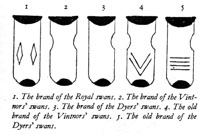 The Royal swans and those of the two privileged guilds are branded with distinctive marks at the annual "swan-uppings". The Royal swans are branded with two diamonds, the dyers' swans with one bar, those of the vintnors with two. The swans are in charge of a special bargemaster, who formerly had various duties connected with the participation of the dyers in the various pageants. Nowadays his duties are confined to marking the swans. This is done in May and July. The bargemaster rows up the Thames with his assistants, and after inspecting the swans, brands the young birds, and checks the marks of the older ones.
The Royal swans and those of the two privileged guilds are branded with distinctive marks at the annual "swan-uppings". The Royal swans are branded with two diamonds, the dyers' swans with one bar, those of the vintnors with two. The swans are in charge of a special bargemaster, who formerly had various duties connected with the participation of the dyers in the various pageants. Nowadays his duties are confined to marking the swans. This is done in May and July. The bargemaster rows up the Thames with his assistants, and after inspecting the swans, brands the young birds, and checks the marks of the older ones.
The last occasion on which the swans took part in a pageant, was at the opening of the Coal Exchange in London. The dyers' barge then bore five white swans in mossy nests.
Saffron Growing in the Middle Ages
Already in the 14th century the Merchants' Guild of Basle called their guild-room "The Saffron", and when in 1423 they built a hail worthy of their importance, the name of the house, which was called after the "King of Herbs", became synonymous with the guild itseif, and the crocus flower, heraldically elaborated, became the badge of the guild.
These details convey some idea of the importance of saffron as an article of trade. The mediaeval cooks and physicians made liberal use of the fine powder won from the dried and pounded stigma of the crocus sativus. It was also used for dyeing cloth and leather.
In the lists of the Basle Customs House of the fourteenth century, saffron was already a standing order. By the long and laborious overland route, or by the vessels of the Oberland watermen, it was imported into the city by the wealthy merchants who dealt in it. The "Saffron War" of 1374 speaks plainly of the quantities consumed. On that occasion a homeward-bound caravan was stopped and plundered near the upper Hauenstein. The most valuable booty which the robbers carried off, was made up of 8 cwt of saffron. In similar manner two Basle merchants were robbed of a valuable load of saffron and other Venetian merchandise near Innsbruck in the war between Basle and Austria in 1410. Such difficulties, in addition to the considerable costs of transport, no less than the tempting prospect of large profits, promoted the idea which, towards the end of the 14th century, was prevalent throughout the reaches of the Upper Rhine, to produce saffron at home. In this matter Basle profited by the fact that its widely travelled merchants were familiar with the process.
From about 1420 the growing and the sale of saffron became a new profitable occupation for the people of Basle, and that to an extent which soon induced the authorities to take a hand in the matter. In a state of joyous expectation the city council announced that "a course of events had arisen, which, by the will of God, should be very profitable, viz., the fact that many people, noble and common, have begun to grow saffron, which appears to be coming on well". In a public proclamation the citizens were warned against damaging the crops, and the city bailiffs instructed to keep a watchful eye on the fields. With the approaching harvest the anxious care of the city fathers again became manifest; they themselves undertook the bringing-in of the harvest and the manufacture of the product. Saffron scales were set up in the Guildhall, on which all quantities exceeding half a pound had to be weighed. Special measures were bought, and a comptroller appointed to see that none of the precious powder was falsified.
Not only the growers, merchants, and the City Council profited by the new industry, The Dean and Chapter of the Cathedral received their tithe, as they did "of every fruit borne by the earth" within the precincts of Basle. It is easy to imagine that the success of the new venture tempted other lords and cities to try their hand at saffron-growing. Seeing no reason why they should help to promote competition, the City Fathers, who were at the same time shrewd businessmen, forbade on penalty of severe punishment the export of seeds. An offer of the City of Ulm to buy seeds in Basle was therefore immediately turned down.
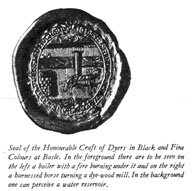 Especially strict measures were taken to prevent any adulteration of the saffron, in order to safeguard this product of the city against ill-repute. In 1419 a citizen was indicted for mixing sandalwood with his saffron and selling it as pure. The culprit was rewarded with two years banishment, and was deprived of his civic rights for life. No less severe was the punishment meted out to two merchants of Cologne several years later for a similar offence committed at Basle.
Especially strict measures were taken to prevent any adulteration of the saffron, in order to safeguard this product of the city against ill-repute. In 1419 a citizen was indicted for mixing sandalwood with his saffron and selling it as pure. The culprit was rewarded with two years banishment, and was deprived of his civic rights for life. No less severe was the punishment meted out to two merchants of Cologne several years later for a similar offence committed at Basle.
This profitable industry was, however, of surprisingly short duration. Scarcely ten years after the promising beginning, a few bad harvests put an end to saffron-growing. Nevertheless Basle became an important centre of the saffron trade when at the time of the Council of Basle (1431-48) a wealthy and enterprising merchant of the city, Heinrich Halbisen by name, together with merchants from Barcelona founded a powerful company for the sale of saffron throughout the German Empire, Flanders, and England.
In England, too, saffron appears to have been grown since the middle of the fourteenth century, especially in the neighbourhood of Histon in Cambridgeshire and Saffron Walden in Essex. The latter named town bears in its coat of arms the saffron-lily, which points to the industry which flourished there until 1768. The English saffron growers were known as crokers.
Lack of Dyestuffs in Mediaeval England
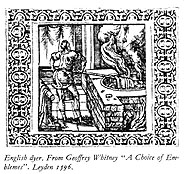
That England was not rich in natural dyestuffs is shown by Geoffrey Whitney's poem "A Choice of Emblemes", Leyden 1596. After describing the labo- rious work of the dyer, and indulging ins lengthy disquisition on colour symbolism, he turns his attention to those foreigners who boast of dyes and dyeing in their country. England is poor in dyes, and possesses
neither the herbs insects, nor other materials necessary for the production of dyes. But Whitney consoles himself with the fact that England has an abundant stock of Oriental dyes, as well as dyers of great skill, and
that colours in England are fresher and finer than any to be seen abroad.
Taxation on mediaeval dyeing
was minutely regulated. The following taxes were imposed in Paris in the 13th century.
Stuffs embroidered with gold or made of gold
are mentioned in the Bible already and were familiar to Persia and Western Asia. After the time of Alexander the Great they became known in Greece, and Etruscan excavations have also produced cloth of gold. In the Middle Ages and even later the drawing-out of silver and gold into fine threads was a recognised industry. In France the prices were fixed by law, £ 10 for a bar of silver gilded for weaving purposes. The process of manufacture was known until the 15th century when it became a secret, which to this day has not been discovered. It seems that linen threads were covered with strips of a fine vegetable substance gilded on one side. Nowadays it is the practice to cover silk threads with a wire of silver gilt.